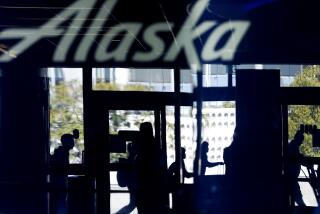Singapore Airlines reintroducing nonstop LAX-Singapore flights
It’s about time.
That’s one of the premises behind the return of Singapore Airlines’ nonstop flights from LAX to Singapore. Starting in November the airline will again offer nonstop service, which began in 2004 and was discontinued a decade later.
United recently announced it was discontinuing its nonstop LAX-Singapore service, the Business Traveller reported.
This time the flight will be in a new Airbus 350-900ULR — ultra-long range. Flying time is estimated at 17½ hours, a decrease of nearly four hours if you were flying current service from LAX and connecting in Seoul.
If you’re connecting in Singapore to another destination, you’ll save even more time, according to figures provided by the airline. If, for instance, you’re flying to Bangkok, Thailand, your journey using current service would last a little more than 25½ hours. With the new flight, you would trim almost four hours off your travels.
The first flight from Singapore to LAX begins Nov. 2.
Passenger comfort in the new Airbus has been enhanced, said Sek Eng Lee, regional vice president, Americas, for Singapore Airlines. The plane has two classes: business (67 seats) and premium economy (94 seats), both offering what might be considered the luxury of room in these generally tight times.
In premium economy, the seat pitch — that is, the distance from one point on your seat to the exact point on the seat in front of you — is 38 inches. Standard economy on most airlines is 29 to 32 inches.
Another improvement: The cabin is pressurized to about 6,000 feet, Lee said. Airline cabin pressures often are at about 8,000 feet.
“Some passengers on long commercial flights experience discomfort characterized by symptoms similar to those of acute mountain sickness,” according to the New England Journal of Medicine. “The symptoms are often attributed to factors such as jet lag, prolonged sitting, dehydration, or contamination of cabin air.”
But the article noted, “Because barometric pressures in aircraft cabins are similar to those at the … altitudes at which acute mountain sickness occurs, it is possible that some of the symptoms are related to the decreased partial pressure of oxygen and are manifestations of acute mountain sickness.”
Or, said more simply, “It’s like you’re in Denver instead of being on a 2,000-foot mountain and looking down on Denver,” said Jon Ostrower, editor in chief of the Air Current, a blog launched this week that “will delve deeply into the world of global aviation.”
That’s particularly important because “the ULR is really designed for insanely long flights — 18, 19, 20 hours airborne,” Ostrower said.
Some passengers on previous Singapore nonstop flights told Lee they weren’t ready to land, even after all those hours airborne.
“They found there was enough time to enjoy a movie, relax and get a full night’s sleep,” Lee said.
That’s particularly true in business class, which increasingly replicates a hotel experience, said Ostrower, whose credits include reporting for the Wall Street Journal and CNN.
Business-class seats “are like mini-hotel suites in a lot of respects: You’ve got a bed, what they consider stellar dining options, you’ve got movies in flight, internet.
“It effectively becomes a hotel room in the air for however long you are airborne.”
More to Read
Sign up for The Wild
We’ll help you find the best places to hike, bike and run, as well as the perfect silent spots for meditation and yoga.
You may occasionally receive promotional content from the Los Angeles Times.







